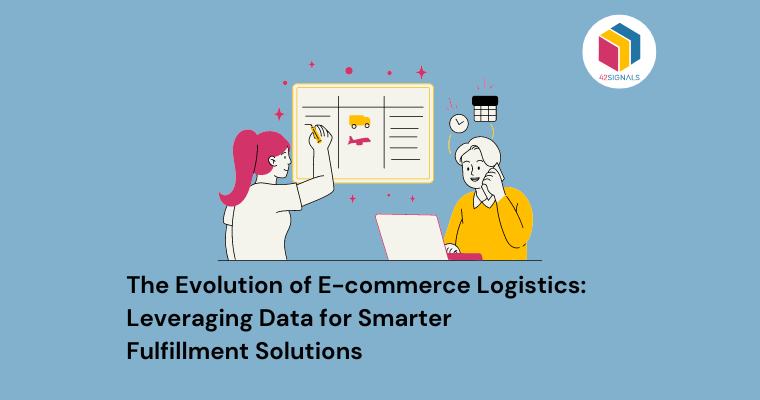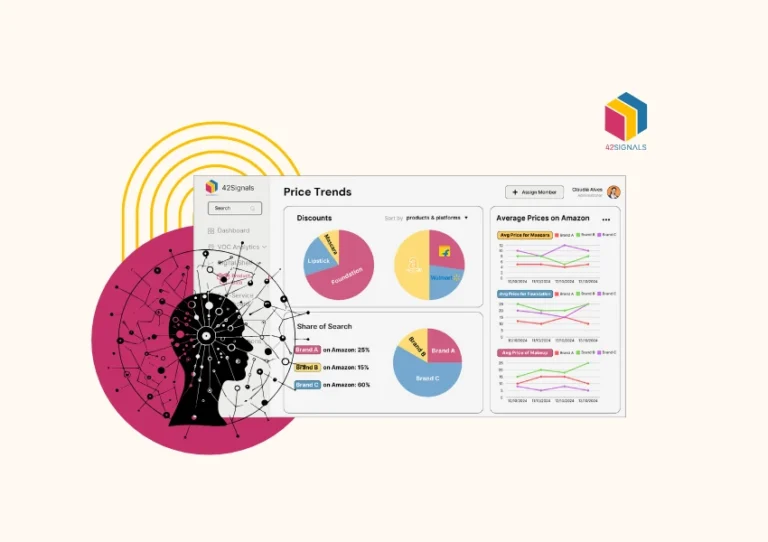E-commerce has experienced exponential growth over the past decade, and with it, e-commerce logistics have evolved dramatically. As customers demand faster delivery times, increased visibility into order status, and a seamless shopping experience, businesses must adapt their fulfillment strategies to meet these expectations.
One critical way companies are staying ahead is by leveraging data to drive smarter e-commerce logistics solutions.
Data for Smoother E-Commerce Logistics Handling
Inventory Management
Effective inventory management lies at the heart of any successful e-commerce logistics operation. By analyzing sales patterns, historical data, and seasonal trends, businesses can make informed decisions about stocking levels, reducing instances of both understocking and overstocking, thus improving e-commerce sales.

Image Source: Advotics
Implementing real-time inventory tracking systems allows companies to monitor product availability across multiple channels, minimizing out-of-stock situations while preventing excess inventory buildup.
Additionally, predictive algorithms can forecast future demand, enabling organizations to prepare accordingly and avoid costly stockouts or markdowns.
Warehouse Optimization
Data analysis plays a crucial role in optimizing warehouse operations in e-commerce logistics.
Machine learning algorithms can determine optimal storage locations based on factors such as product velocity, dimensions, weight, and handling requirements.
This not only streamlines picking processes but also reduces travel time within the facility.

Image Source: ShipBob
Moreover, automated guided vehicles (AGVs) and robotics equipped with sensors generate valuable performance metrics, helping managers identify bottlenecks, improve workflow efficiency, and reduce labor costs.
Transportation Planning
Leveraging data enables businesses to create more efficient transportation plans in their e-commerce logistics planning, resulting in reduced shipping costs and quicker deliveries.
Advanced routing software considers variables like traffic conditions, weather patterns, and carrier capacity constraints when determining the best routes for each shipment.
Furthermore, multi-modal transport options – combining different modes of transportation such as air, sea, rail, and road freight – can be evaluated based on real-time data, ensuring timely and cost-effective deliveries.
Last-Mile Delivery
The final leg of the supply chain, known as “last-mile” delivery, often poses significant challenges for e-commerce logistics planning due to its complexity and high operational expenses.
However, innovative data-driven solutions are emerging to address these issues.

Image Source: CB Insights
For instance, geo-analytics tools enable carriers to analyze demographic information, customer preferences, and historical traffic patterns to design optimal delivery routes tailored to individual needs.
Meanwhile, crowdsource platforms connect retailers with local courier services or even private individuals willing to handle last-mile deliveries, providing greater flexibility and speed at lower costs than traditional methods.
Returns Management
An effective returns process is essential for maintaining customer satisfaction, yet a massive pain point in e-commerce logistics.
Analyzing return rates, reasons, and patterns helps businesses pinpoint potential areas for improvement throughout the entire buying journey – from product descriptions and images to packaging materials and delivery speeds.
Armed with this insight, companies can take proactive measures to minimize unnecessary returns, enhance product quality, and refine marketing strategies.

Image Source: Webinterpret
Conclusion on E-commerce Logistics
As consumer demands continue evolving, so too will the need for advanced data analytics in e-commerce logistics.
To remain competitive, e-commerce enterprises must leverage every available resource – particularly actionable digital shelf insights derived from comprehensive data analysis – to inform strategic decision-making and stay one step ahead of new developments in the e-commerce space.
For e-commerce analytics solutions, get in touch with us at sales@42signals.com
Frequently Asked Questions
What is e-commerce logistics?
E-commerce logistics refers to the coordination and management of all activities involved in delivering orders placed online to customers. This includes everything from receiving and processing orders, picking and packing items, managing inventory levels, selecting carriers and shipping methods, tracking packages, handling returns and exchanges, and communicating with customers throughout the delivery process.
What is the role of logistics in commerce?
Logistics plays a critical role in commerce by ensuring that goods and services move efficiently and effectively from suppliers to customers. Logistics encompasses a wide range of activities, including transportation, warehousing, inventory management, order fulfillment, packaging, and distribution.
What do you mean by e-logistics?
eLogistics or e-commerce logistics, also known as “electronic” or “digital” logistics, refers to the integration of digital technologies into logistics operations. This can include automating manual tasks, using real-time data analytics to inform decision-making, implementing AI and machine learning algorithms to predict and prevent disruptions, and leveraging mobile devices and cloud computing to enable remote monitoring and control.
What are the 4 major types of logistics?
While there are many different ways to categorize logistics functions, one common framework divides them into four main areas:
a. Procurement logistics: This involves sourcing raw materials and components from suppliers, negotiating contracts, scheduling deliveries, and managing inventory levels.
b. Production logistics: This focuses on managing the flow of materials and parts through manufacturing facilities, coordinating production schedules, and ensuring quality standards are met.
c. Distribution logistics: This entails storing finished goods, preparing orders for shipment, selecting appropriate carriers, and arranging transportation modes.
d. Reverse logistics: This deals with returning defective or unwanted products, repairing or refurbishing items, disposing of waste, and recycling materials. Each of these logistics types requires specialized knowledge, skills, and resources, and must be carefully managed to achieve optimal results.





